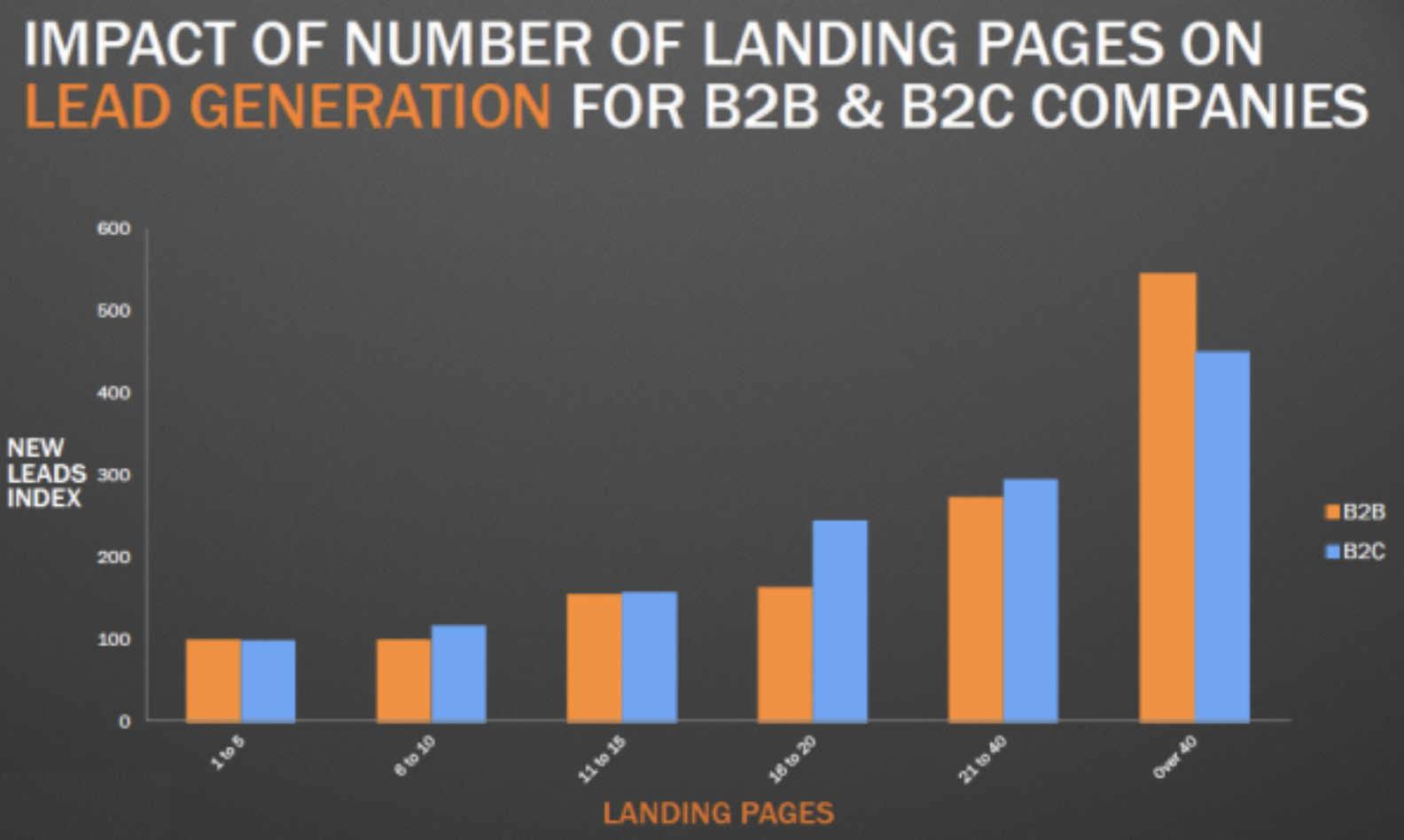3 Keys to Optimizing Software Services Landing Pages
B2B SaaS companies compete in crowded industry sectors, selling intangible services that often address complex problems. Landing pages play a crucial competitive role in attracting interested leads and converting them to the next step in the sales funnel.
And it turns out that less is not more regarding landing pages, especially for B2B. HubSpot reports that companies with 40 or more landing pages see a 55% increase in leads.

Your landing pages are a significant stop for your buyers’ journey. From design to testing, optimizing a landing page can be costly. That’s why even though there are dozens of variables to test, we suggest you start with optimizing three main areas that function as performance levers for landing pages. Landing pages with video testimonials, excellent sales copy, and a friction-free user experience will put you ahead of the game.
Landing pages with video testimonials, excellent sales copy, and a friction-free user experience will put you ahead of the game. Share on XVideo Testimonials to Optimize SaaS Landing Pages
Video testimonials on your landing page are a powerful way to build trust and credibility with potential customers. People are more likely to trust the experiences and opinions of actual clients and customers than any marketing jargon.
Get Specific With Your Testimonials
To make the most impact, create specific testimonials. Ask for statements about how your solution solved a particular problem for the customer. Interview formats work well because the viewer can see themselves in the dynamic as long as you ask the kinds of questions that your ideal client would ask. This approach also builds trust by positioning your brand in the context of authentic conversations.
Production Value Still Matters in B2B Videos
We are in an era where casual video is the norm, and in many cases, that’s acceptable. For testimonials, though, you want to take some extra time to make the recording as polished as possible. Most SaaS companies will benefit from videos that have decent production value.
Smartphone cameras are fairly good; just be sure you use a tripod, have good lighting, clear audio, and a well-framed shot. You want the viewer to focus on the speakers, not be distracted by issues with the video itself.
You can save time and money by batching your production and creating shorter videos from longer interview footage when creating multiple videos for testing.
Straightforward Copy
While online marketing has been around since the 1990s, sales pages predate the internet with direct copy marketers from the 1950s and even earlier. Today’s B2B prospects are busier and more skeptical than ever. While testing will help you identify what’s resonating with your audience, here are some tips for landing page copy that converts:
- Build your copy around a single conversion goal: While giving people choices may seem like a good idea, research shows that the more options you offer people, the more they delay the decision. With landing pages, this translates into a higher bounce rate.
- Lead with benefits: Describe your services’ benefits before presenting a laundry list of features.
- Be specific: Focus on specific pain points and how your solution helps them achieve their goals.
- Be succinct: While longer landing pages perform better in some cases, longer doesn’t mean rambling with filler copy. Wandering copy causes busy people to lose interest and click away. Grammarly is your friend not only for correctness but for flagging wordiness. Prospects who can easily follow the structure of the content flow stay on the page longer.
- Personalize the experience: Don’t show the same offer repeatedly to a returning visitor that you deliver to a first-time visitor.
Unfortunately, even the perfect landing page copy can’t fix bounce rates from poor user experience. Let’s look at how to improve your visitor’s experience on the landing page.
User Experience Keys for B2B Landing Pages
B2B prospects are busy. Most expect an almost seamless user experience from the sites they visit. From a page design perspective, the book “Don’t Make Me Think” by Steve Krug is an excellent resource for improving user experience and conversions.
In addition, check the tech behind the page performance by testing for the following:
Compatibility Across Devices
People use various devices and operating systems to browse the internet. They expect a uniform experience across all devices. The same viewer may start looking at your landing page on their laptop, then leave the office and pull it up on their phone while waiting for a friend at a coffee shop.
Ensuring that your SaaS landing page is compatible with various devices and browsers is crucial for conversions. A responsive design that automatically adjusts the page layout to fit different screen sizes and devices ensures a seamless user experience across devices.
Loading Speed and Performance
Slow-loading pages are deadly to your landing page results. Engaging visual design is essential, yet it should never come at the cost of loading speed and performance. Studies have shown that even a one-second delay in loading time can significantly impact bounce rates.
If your landing page takes too long to load, potential customers might abandon it before seeing your offerings.
Optimize your landing page by compressing images, leveraging browser caching, and using efficient coding practices. Prioritize performance to ensure your prospects have a smooth and satisfying experience, regardless of their internet connection or device.
Moving Ahead with SaaS B2B Landing Page Strategies
At the core, landing pages are an opportunity to build trust and credibility with potential customers. Delivering an excellent user experience and clear value proposition will go a long way in converting visitors into loyal users.
If you think dozens of well-crafted, longer landing pages will lead to more leads, you’re not wrong – but there is a catch. The caveat is that the more complex your outreach, the more essential testing is to be sure you are making the right choices.
And testing is where our expert team at FunnelEnvy can assist. We work with clients in many industries, from consumer healthcare to industrial equipment. We provide customized assistance to our clients with all elements of their landing page design, from technical aspects like page speed and caching to form fields and CTA design.
Are you interested in finding out more? Just click here to complete a short quiz that we’ve created to help us learn more about your needs and how we may be able to help.









